Are you a bird enthusiast looking to capture the beauty of these winged wonders? A reliable camera is your perfect companion on this journey! With the right birding camera, you can preserve precious moments and intricate details of these fascinating creatures. In this article, we’ll explore the top 10 cameras suitable for bird photography, ensuring you never miss a beat.
What is birding photography?
Birding photography is an exciting hobby that combines the love for birds and the art of capturing their beauty through a camera lens. It involves using specialized cameras and equipment to photograph birds in their natural habitats, freezing their unique behaviors and intricate details for others to admire. With the right camera, birding photography allows enthusiasts to document and share their encounters with these magnificent creatures.
In birding photography, a camera becomes a powerful tool that enables you to capture the fleeting moments of birds in flight, their vibrant plumage, and their captivating expressions. With the advancement of technology, modern cameras offer impressive features specifically designed to meet the challenges of photographing birds.
Using an active approach, birding photographers seek out opportunities to capture birds in action, patiently observing their movements and habits. With the right camera in hand, they can immortalize the elegance and grace of birds, whether it’s a soaring eagle, a tiny hummingbird sipping nectar, or a colorful parrot perched on a branch.

Photo by Depositphotos
What are the key features to look for in a birding camera?
When it comes to capturing the beauty of birds, having the right camera is essential. Here are the key features to consider when choosing a birding camera:
1. Camera type
When choosing a camera for bird photography, you will need to decide between a mirrorless camera and a DSLR.
DSLR cameras are still a good choice for many bird photographers, because they have a large image sensor, and there is a wider selection of lenses available for DSLRs than for mirrorless cameras. This is important for bird photography, where you often need to use long telephoto lenses. Of course, they have some disadvantages such as they are larger and heavier than mirrorless cameras, which can make them more difficult to carry around.
On the other hand, mirrorless cameras are becoming increasingly popular for bird photography, as they offer several advantages over DSLRs, such as:
- Silent shooting: Mirrorless cameras do not have a mirror, which flips up when the shutter is released. This makes them much quieter than DSLRs, which is important when photographing birds.
- Faster frame rates: Mirrorless cameras are capable of shooting at faster frame rates than DSLRs. This is important for capturing fast-moving birds.
Disadvantages of mirrorless cameras for bird photography
- Lenses: There are not as many lenses available for mirrorless cameras as there are for DSLRs. However, this is changing as more and more manufacturers release lenses for mirrorless cameras.
- Battery life: Mirrorless cameras tend to have shorter battery life than DSLRs. However, this is improving with newer models.
If you are looking for a camera for bird photography, I recommend a mirrorless camera, with some exceptions for DSLR cameras. There are many great options available, and the prices are coming down.
2- Sensor size
Sensor size is crucial in bird photography, with three categories: full-frame, APS-C (crop sensor), and Micro Four Thirds. Full-frame sensors excel in low light, offering higher ISO settings and less noise. They also have higher resolution for large prints. Smaller sensors limit cropping flexibility due to smaller file sizes.
APS-C and Micro Four Thirds sensors have a crop factor advantage. They provide a magnified view, allowing greater practical magnification with the same lens compared to full-frame sensors. APS-C has a 1.5-1.6x crop factor, while Micro Four Thirds has a 2.0x crop factor. For example, on a 1.5x body, a 400mm lens would provide an angle of view equivalent to a 600mm lens on a full-frame body.
3. Fast Autofocus:
Look for a camera with a responsive autofocus system that quickly and accurately focuses on birds, ensuring you don’t miss any fleeting moments.
4. High-Resolution Sensor:
A camera with a high-resolution sensor captures fine details, allowing you to appreciate the intricate patterns of feathers and the vibrant colors of birds.
5. Continuous Shooting Speed:
Birds are known for their swift movements, so a camera with a fast continuous shooting speed enables you to capture multiple frames per second, increasing your chances of getting the perfect shot.
6. Optimal ISO Performance:
Birds are active during different lighting conditions, so a camera with excellent ISO performance handles low-light situations without sacrificing image quality, reducing noise in your photos.
7. Image Stabilization:
Birds don’t always stay still, and handheld shooting can result in a camera shake. Look for a camera with built-in image stabilization to ensure sharp images, especially when using longer lenses.
8. Battery Life:
Birding adventures can last for hours, so a camera with long battery life ensures you don’t miss out on any remarkable moments.
9. Budget
Your budget will have a significant impact on the type of camera you can buy for bird photography. In general, more expensive cameras will have better image quality, autofocus performance, and lens selection. However, there are also some great cameras available at a lower price point that can still produce excellent results.
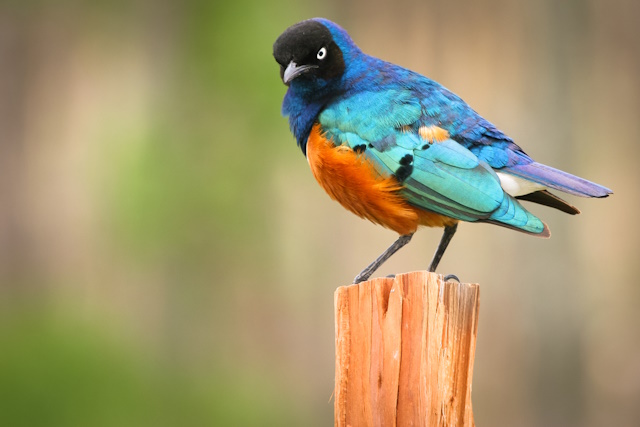
Photo by Depositphotos
10 Best Birding Cameras
- Nikon D500
- Canon EOS 5D Mark IV
- Canon EOS R7
- Sony a6400
- Fujifilm X-T4
- Olympus OM-D E-M1X
- Sony a7 IV
- Canon EOS R3
- Nikon Z9
- Sony A1
The Nikon D500 is primarily designed for serious enthusiasts and professional photographers who require a smaller, lighter, and highly versatile camera. The main target audience for the D500 includes sports and wildlife photographers. The Nikon D500 is considered a perfect camera for birding photography for several reasons:
- High-speed performance: The Nikon D500 has a fast continuous shooting speed of up to 10 frames per second (fps), which is essential for capturing fast-moving birds in flight or during other dynamic behaviors.
- Advanced autofocus system: The D500 features a 153-point autofocus (AF) system with 99 cross-type sensors, providing excellent tracking and focusing capabilities for moving subjects like birds.
- Crop sensor advantage: The D500 has an APS-C (DX) sensor, which provides a 1.5x crop factor. This effectively increases the focal length of your lenses, allowing you to get closer to your subjects without physically moving closer.
- High ISO performance: The D500 has an impressive ISO range of 100-51,200, which can be expanded to 50-1,640,000. This allows you to capture sharp images in low-light conditions, such as during early morning or late evening birding sessions.
- Weather sealing and durability: The D500 is built with a robust magnesium alloy body and is weather-sealed, making it suitable for use in various outdoor conditions. This is particularly important for birding photographers who often shoot in challenging environments.
- Compatibility with a wide range of lenses: The Nikon D500 is compatible with a vast selection of Nikon lenses, including telephoto lenses that are essential for bird photography. This allows you to choose the best lens for your specific needs and shooting situations.
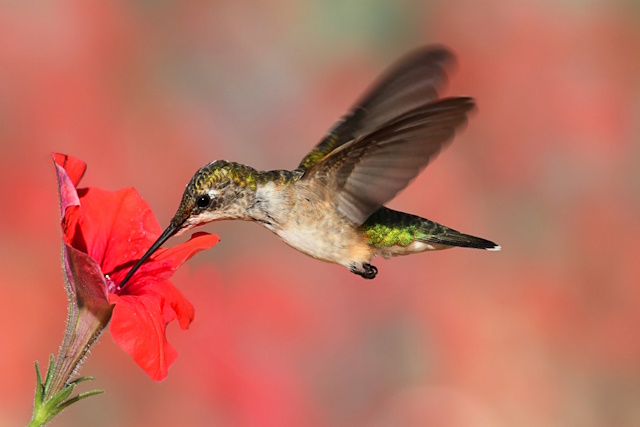
Photo by Depositphotos
The Canon EOS 5D Mark IV is designed to appeal to both professional photographers and serious enthusiasts. While it may not be specifically designed for birding photography, its combination of high-resolution sensor, advanced autofocus capabilities, continuous shooting speed, Dual Pixel CMOS AF, high ISO performance, durability, and lens compatibility make it a strong choice for birding photographers.
It is considered a great camera for birding photography for several reasons:
- High-resolution sensor: The 5D Mark IV features a 30.4-megapixel full-frame sensor, which allows you to capture highly detailed images of birds. This high resolution also provides flexibility for cropping images in post-processing without losing significant detail.
- Advanced autofocus system: The camera is equipped with a 61-point autofocus (AF) system, including 41 cross-type points, which ensures fast and accurate focusing on moving subjects like birds.
- Continuous shooting speed: The 5D Mark IV offers a continuous shooting speed of up to 7 frames per second (fps), which is suitable for capturing birds in flight or during other dynamic behaviors.
- Dual Pixel CMOS AF: This technology provides fast and accurate autofocus during Live View and video recording, making it easier to track and capture birds in motion.
- High ISO performance: The camera has an ISO range of 100-32,000, which can be expanded to 50-102,400. This allows you to capture sharp images in low-light conditions, such as during early morning or late evening birding sessions.
- Weather sealing and durability: The 5D Mark IV is built with a robust magnesium alloy body and is weather-sealed, making it suitable for use in various outdoor conditions. This is particularly important for birding photographers who often shoot in challenging environments.
- Compatibility with a wide range of lenses: The Canon EOS 5D Mark IV is compatible with a vast selection of Canon lenses, including telephoto lenses that are essential for bird photography. This allows you to choose the best lens for your specific needs and shooting situations.
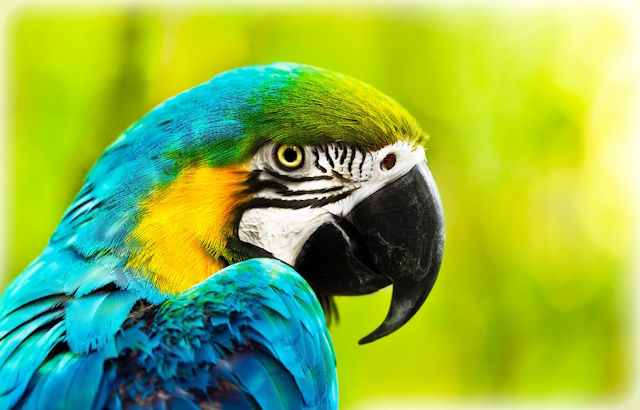
Photo by Depositphotos
The Canon EOS R7 is designed to suit a variety of photographers, from beginners to enthusiasts to professionals, and is considered a perfect camera for birding photography because of its combination of features, including:
- High-speed autofocus: The R7 features a Dual Pixel CMOS AF II system with 651 autofocus points, including 47 cross-type points. This allows it to quickly and accurately lock onto birds in flight, even when they are moving erratically.
- High-resolution sensor: The R7 has a 32.5MP APS-C sensor that captures stunning detail and clarity in bird images. This is especially important when you are cropping in to get closer to your subject.
- Fast continuous shooting: The R7 can shoot up to 30fps with continuous autofocus and exposure. This allows you to capture fast-moving birds with ease.
- In-body image stabilization: The R7 features in-body image stabilization, which can help to reduce camera shake when shooting handheld. This is especially useful when using longer lenses.
- Weather sealing: The R7 is weather-sealed, making it a good choice for shooting in challenging conditions, such as rain or snow.
Overall, the Canon EOS R7 is a powerful and versatile camera that is well-suited for birding photography. It offers a combination of features that make it easy to capture stunning images of birds in flight, even in challenging conditions.
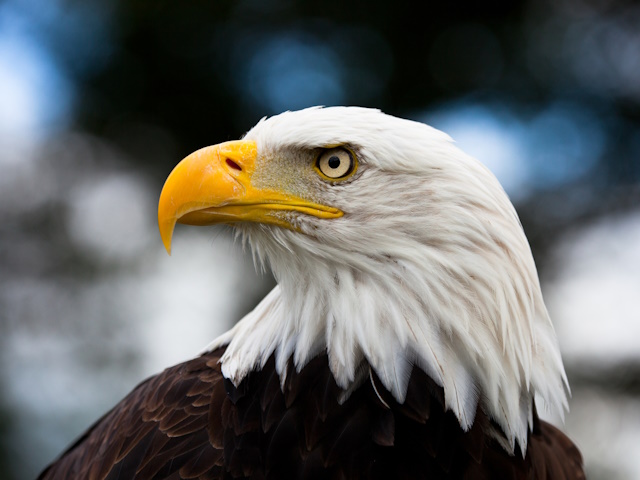
Photo by Depositphotos
The Sony a6400 is a versatile camera that can be used by a variety of photographers, from beginners to professionals. It is a good choice for anyone who wants a camera that can produce high-quality images and videos and that is easy to use.
The Sony a6400 is a great camera for birding photography for a number of reasons, including:
- Fast autofocus: The a6400 has a fast and accurate autofocus system that can quickly lock onto birds in flight. This is essential for getting sharp shots of fast-moving subjects.
- High-resolution sensor: The a6400’s 24.2MP APS-C sensor captures a lot of detail, which is important for capturing the fine details of birds’ feathers and plumage.
- Image stabilization: The a6400 has in-body image stabilization, which helps to reduce camera shake and blur caused by handholding the camera. This is important for getting sharp shots at slow shutter speeds.
- Vari-angle touchscreen LCD: The a6400’s vari-angle touchscreen LCD makes it easy to compose shots from different angles, such as from below or above the bird. This can help get unique perspectives and avoid obstacles.
- Weather-sealed body: The a6400’s weather-sealed body makes it possible to use the camera in wet and humid conditions, such as rain or snow. This is important for birding in outdoor environments.

Photo by Depositphotos
The Fujifilm X-T4 is a well-rounded camera that caters to the needs of photographers at different skill levels, from beginners to professionals, across a wide range of photography genres.
The Fujifilm X-T4 is a good option for bird photography for several reasons:
- Improved Autofocus: The X-T4 features an improved autofocus system compared to its predecessor, the X-T3. This improvement in autofocus performance, particularly in terms of tracking, is beneficial for capturing fast-moving subjects like birds in flight.
- High-speed continuous shooting: The X-T4 offers high-speed continuous shooting, which is essential for capturing birds in motion. This feature allows you to take multiple shots in quick succession, increasing the chances of getting a sharp, well-timed image.
- In-Body Image Stabilization (IBIS): The X-T4 comes with in-body image stabilization, which helps to reduce camera shake and produce sharper images, especially when using longer focal length lenses that are common in bird photography.
- Compatibility with high-quality lenses: The X-T4 is compatible with Fujifilm’s impressive array of lenses, many of which are optically stellar and reasonably priced. This allows you to choose the right lens for bird photography, such as the Fujifilm XF 100-400mm or the XF 200mm.
- Customizable settings: The X-T4 offers various customizable settings that can be tailored to suit bird photography, such as focus priority, which ensures the best possible hit rate for in-focus images.
However, it’s worth noting that the X-T4 lacks a prominent grip on the front, which can make holding the camera tiring when using larger lenses like the 100-400mm or the 200mm. Despite this, the Fujifilm X-T4 remains a strong option for bird photography due to its autofocus performance, continuous shooting capabilities, and compatibility with high-quality lenses.

Photo by Depositphotos
The Olympus OM-D E-M1X is a high-end mirrorless camera that is suitable for photographers of all skill levels. It is a good option for bird photography because it has a fast and accurate autofocus system, a high-resolution sensor, and a weather-sealed body.
Here are some of the features that make the Olympus OM-D E-M1X a good choice for bird photography:
- Fast and accurate autofocus system: The OM-D E-M1X has a 121-point all-cross-type autofocus system that is capable of tracking fast-moving subjects with ease. This is important for bird photography, as birds are often moving quickly and erratically.
- High-resolution sensor: The OM-D E-M1X has a 20.4MP Live MOS sensor that produces high-quality images with plenty of detail. This is important for bird photography, as you want to be able to capture all the details of the bird’s feathers and features.
- Weather-sealed body: The OM-D E-M1X is weather-sealed, making it resistant to dust and water. This is important for bird photography, as you often find yourself shooting in wet or dusty conditions.
In addition to these features, the OM-D E-M1X also has several other features that make it a good choice for bird photography, such as a high-speed continuous shooting mode, a built-in flash, and a large electronic viewfinder.

The design of the Sony a7 IV is suitable for photographers of all skill levels. It is a well-rounded camera that offers a good balance of features and performance. The a7 IV is also weather-sealed, making it a good option for outdoor photography, such as bird photography.
Here are some of the features that make the Sony a7 IV a good choice for bird photography:
- Fast and accurate autofocus system: The a7 IV has a 693-point autofocus system that is capable of tracking fast-moving subjects with ease. This is important for bird photography, as birds are often moving quickly and erratically.
- High-resolution sensor: The a7 IV has a 33MP full-frame sensor that produces high-quality images with plenty of detail. This is important for bird photography, as you want to be able to capture all the details of the bird’s feathers and features.
- Weather-sealed body: The a7 IV is weather-sealed, making it resistant to dust and water. This is important for bird photography, as you often find yourself shooting in wet or dusty conditions.
- High-speed continuous shooting mode: The a7 IV can shoot at up to 10fps, which is useful for capturing fast-moving birds.
- Large electronic viewfinder: The a7 IV has a large 0.5-inch electronic viewfinder with 3.68 million dots. This provides a clear and sharp view of the scene, which is important for bird photography.
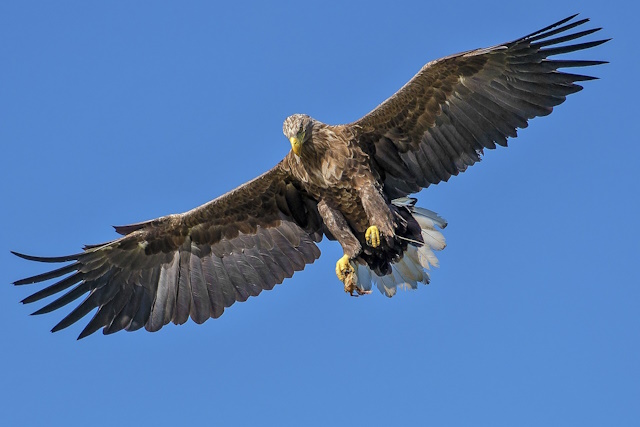
Image by Torben Stroem from Pixabay
The Canon EOS R3 is a high-performance mirrorless camera that is well-suited for a variety of photography applications, including bird photography. It features a 24.1MP full-frame stacked CMOS sensor, DIGIC X image processor, and Dual Pixel CMOS AF II system with eye detection and animal detection. This combination of features allows the R3 to capture sharp, high-resolution images and videos of birds in flight or other challenging situations.
Here are some of the reasons why the Canon EOS R3 is a good option for bird photography:
- Fast and accurate autofocus: The R3’s Dual Pixel CMOS AF II system is one of the quickest and most accurate autofocus systems on the market. It can track fast-moving subjects, even in low light, and even detect and track birds in flight.
- High-resolution sensor: The R3’s 24.1MP full-frame sensor produces high-resolution images with plenty of detail. This is important for bird photography, as you want to be able to capture all the details of the bird’s feathers and features.
- Weather-sealed body: The R3’s weather-sealed body makes it a good option for outdoor photography, such as bird photography. This means that you can use it in wet or dusty conditions without having to worry about damaging it.
- High-speed continuous shooting: The R3 can shoot at up to 30fps, which is useful for capturing fast-moving birds.
- Built-in flash: The R3 has a built-in flash, which can be useful for fill flash or for shooting in low light.
- Large electronic viewfinder: The R3 has a large 0.5-inch electronic viewfinder with 5.76 million dots. This provides a clear and sharp view of the scene, which is important for bird photography.

The Nikon Z9 is a high-end mirrorless camera that was released in 2021. It is designed for professional photographers and videographers, and it offers several features that make it well-suited for bird photography.
Some of the key features of the Nikon Z9 that make it a good option for bird photography include:
- Fast and accurate autofocus system: The Z9 has a 493-point autofocus system that is capable of tracking fast-moving subjects, even in low light. This is important for bird photography, as birds are often moving quickly and erratically.
- High-resolution sensor: The Z9 has a 45.7MP full-frame sensor that produces high-quality images with plenty of detail. This is important for bird photography, as you want to be able to capture all the details of the bird’s feathers and features.
- Weather-sealed body: The Z9 is weather-sealed, making it resistant to dust and water. This is important for bird photography, as you often find yourself shooting in wet or dusty conditions.
- High-speed continuous shooting: The Z9 can shoot at up to 20fps, which is useful for capturing fast-moving birds.
- Large electronic viewfinder: The Z9 has a large 0.5-inch electronic viewfinder with 3.69 million dots. This provides a clear and sharp view of the scene, which is important for bird photography.

The Sony A1 is a high-end mirrorless camera that was released in 2021. It is designed for professional photographers and videographers, and it offers several features that make it well-suited for bird photography.
Some of the key features of the Sony A1 that make it a good option for bird photography include:
- Fast and accurate autofocus system: The A1 has a 759-point autofocus system that is capable of tracking fast-moving subjects, even in low light. This is important for bird photography, as birds are often moving quickly and erratically.
- High-resolution sensor: The A1 has a 50.1MP full-frame sensor that produces high-quality images with plenty of detail. This is important for bird photography, as you want to be able to capture all the details of the bird’s feathers and features.
- Weather-sealed body: The A1 is weather-sealed, making it resistant to dust and water. This is important for bird photography, as you often find yourself shooting in wet or dusty conditions.
- High-speed continuous shooting: The A1 can shoot at up to 30fps, which is useful for capturing fast-moving birds.
- Large electronic viewfinder: The A1 has a large 0.64-inch electronic viewfinder with 9.44 million dots. This provides a clear and sharp view of the scene, which is important for bird photography.
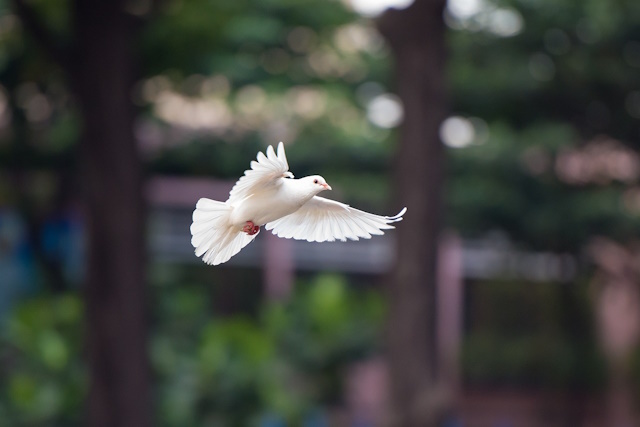
Image by Kiều Trường from Pixabay
Comparison Tables
The table below summarizes the main features of the above-mentioned cameras
| Camera | Camera type | Sensor size | Autofocus | Continuous Shooting Speed | Image Stabilization | Battery Life | Price |
|---|---|---|---|---|---|---|---|
| Nikon D500 | DSLR | APS-C | 51 focus points | 10 fps | No | 700 shots | $1,999 |
| Canon EOS 5D Mark IV | DSLR | Full-frame | 61 focus points | 7 fps | No | 950 shots | $3,499 |
| Canon EOS R7 | Mirrorless | APS-C | 65 focus points | 10 fps | 5-axis in-body | 320 shots | $1,899 |
| Sony a6400 | Mirrorless | APS-C | 425 focus points | 11 fps | No | 360 shots | $1,399 |
| Fujifilm X-T4 | Mirrorless | APS-C | 425 focus points | 15 fps | 5-axis in-body | 300 shots | $1,799 |
| Olympus OM-D E-M1X | Mirrorless | Micro Four-Thirds | 121 focus points | 60 fps | 5-axis in-body | 570 shots | $3,699 |
| Sony a7 IV | Mirrorless | Full-frame | 759 focus points | 10 fps | 5-axis in-body | 500 shots | $2,499 |
| Canon EOS R3 | Mirrorless | Full-frame | 607 focus points | 20 fps | 5-axis in-body | 560 shots | $4,999 |
| Nikon Z9 | Mirrorless | Full-frame | 493 focus points | 20 fps | 5-axis in-body | 700 shots | $5,499 |
| Sony A1 | Mirrorless | Full-frame | 759 focus points | 30 fps | 5-axis in-body | 530 shots | $6,500 |
The table below shows the compatible type of lenses and two recommended lenses for each camera.
| Camera | Compatible lens types | Recommended lenses for bird photography |
|---|---|---|
| Nikon D500 | F-mount lenses | Nikon 200-500mm f/5.6E ED VR and Sigma 150-600mm f/5-6.3 DG OS HSM Sports |
| Canon EOS 5D Mark IV | EF lenses | Canon 100-400mm f/4.5-5.6L IS II USM and Sigma 150-600mm f/5-6.3 DG OS HSM Sports |
| Canon EOS R7 | RF lenses | Canon RF 100-400mm f/4.5-5.6L IS USM and Sigma 100-400mm f/5-6.3 DG OS HSM Contemporary |
| Sony a6400 | E-mount lenses | Sony FE 70-200mm f/2.8 GM OSS and Sigma 100-400mm f/5-6.3 DG OS HSM Contemporary |
| Fujifilm X-T4 | X-mount lenses | Fujifilm XF 100-400mm f/4.5-5.6 R LM OIS WR and Viltrox 100-400mm f/4.5-5.6 II MACRO |
| Olympus OM-D E-M1X | Micro Four Thirds lenses | Olympus M.Zuiko Digital ED 300mm F4 IS PRO and Sigma 150-600mm f/5-6.3 DG OS HSM Sports |
| Sony a7 IV | E-mount lenses | Sony FE 200-600mm f/5.6-6.3 G OSS and Sigma 150-600mm f/5-6.3 DG OS HSM Sports |
| Canon EOS R3 | RF lenses | Canon RF 600mm f/4L IS USM and Canon RF 800mm f/5.6L IS USM |
| Nikon Z9 | Z-mount lenses | Nikon Z 70-200mm f/2.8 VR S and Nikon Z 100-400mm f/4.5-5.6 VR S |
| Sony A1 | E-mount lenses | Sony FE 400mm f/2.8 GM OSS and Sony FE 600mm f/4 GM OSS |
Conclusion
Selecting the best birding camera can be a daunting task, especially with so many options available. To make the process easier, consider these factors:
- Budget: Determine how much you’re willing to spend. There’s a wide range of prices, so set a budget that suits your needs.
- Sensor size: Larger sensors capture more detail, but they also increase the camera’s size and weight. Balance your preferences for image quality and portability.
- Autofocus speed: Fast autofocus is crucial for capturing birds in flight. Look for cameras with quick and accurate autofocus systems.
- Frames per second: A higher frame rate allows you to capture more images in a short time, increasing your chances of getting the perfect shot.
- Weather resistance: Birding often involves unpredictable weather. Opt for a camera with weather sealing to protect your investment.
- Lens compatibility: Ensure the camera you choose is compatible with a variety of lenses, as different birding situations may require different focal lengths.
In conclusion, finding the perfect birding camera depends on your budget, preferences, and specific needs. By considering the factors mentioned above and exploring the recommended options, you’ll be well on your way to capturing stunning bird images. Happy birding!
If you are not satisfied with the prices of the above-mentioned cameras, there is another option, that you may consider buying a used camera. Buying used cameras has almost become an industry by itself. There are many high-quality second-hand cameras out there, which means you can fulfill your needs and still save a good bit of money. For more detailed information you may check my posts:
What Is The Best Place To Buy Used Camera Lenses
How To Buy Used Camera Lenses? – KEH Is The Answer!
Although Amazon, B&H, and ADORAMA have their markets for used photography gear, my recommended place is KEH. It is a one-stop shop for camera and lens enthusiasts who love the process of buying and selling gear. They have one of the largest online camera and lens collections around and they have streamlined the process of buying and selling in a way few others have.
Related posts
Bird Photography – Step By Step Guide
Best Canon Lenses For Bird Photography
Canon R7 Vs R10- New Lineup RF Mount APS-C Cameras
Sony A7 III Vs A7 IV – The Full Comparison
Thanks for reading, I hope you enjoyed the article, in case you have any questions just drop them below & I will be happy to answer you.
The featured Image by Pavan Prasad from Pixabay
If you enjoy the site, don’t forget to subscribe, we will only inform you when a new article is posted.

















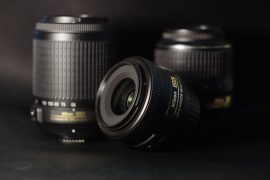

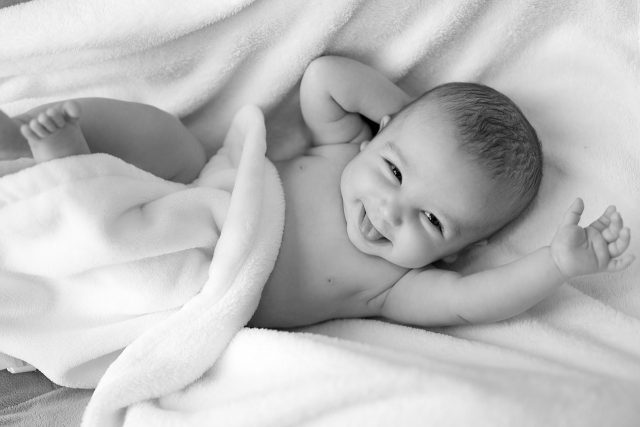

I was thrilled to stumble upon this article, as a passionate birding enthusiast always on the lookout for the perfect camera to capture those fleeting avian moments. The author has done a fantastic job compiling a list of the top 10 birding cameras, providing valuable insights for fellow bird photographers.
What stands out about this article is the author’s in-depth analysis of each camera’s features, capabilities, and suitability for birding. From high-resolution sensors to fast autofocus systems, the article covers a range of important aspects that bird photographers prioritize when selecting a camera. The inclusion of sample bird photographs taken with each camera further enhances the article’s practicality and helps readers visualize the potential results.
I commend the author for their comprehensive and well-researched guide to birding cameras. It is evident that they have a deep understanding of the unique requirements of bird photographers. This article is a valuable resource for anyone seeking to elevate their bird photography game or venture into the exciting world of birding. Thank you for sharing this informative piece that will undoubtedly assist birding enthusiasts in finding their perfect camera match.
Thank you so much for your kind words! I’m so glad that you found my article helpful. I’m also a passionate birder, and I know how important it is to have the right camera gear. That’s why I put so much time and effort into researching and writing this article. I wanted to make sure that it was a comprehensive and informative resource for bird photographers of all levels.
I’m really glad that you appreciated the in-depth analysis of each camera’s features. I know that bird photographers are very particular about their gear, and I wanted to make sure that I covered all of the important factors.
I’m always happy to help other birders, so please don’t hesitate to reach out if you have any questions.
Great article, but I must ask, Do you know the most important thing everyone must know, no matter if you are an amateur or professional on the topic? It is a 100% must if you are going to take part in the activity of birding. Perhaps any activity at all….
Thank you for your comment. I think the most important thing in birding or any activity is to practice respect and conservation for the natural environment. This includes avoiding disturbance to birds and their habitats, following ethical guidelines, and supporting conservation efforts. Prioritizing the well-being of birds and their habitats is essential for all birders, whether amateur or professional.